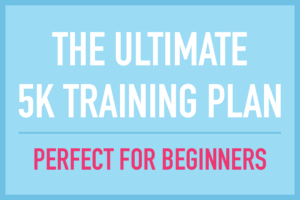OK, I know the title of this article sounds silly. We all breathe in and out every day, but did you know that breathing technique can actually help your running technique and protect against injuries? Tonight we are here to talk about how to breathe while running and why it’s important.
How to Breathe while Running
Learn Belly Breathing
Belly Breathing, also known as diaphragmatic breathing, maximizes the trade off from incoming oxygen and outgoing carbon dioxide. By practicing this deep belly breathing, with every inhale your diaphragm drops allowing your lungs to fully expand. According to an article by Harvard Health Publishing, belly breathing helps stabilize blood pressure and slow your heartbeat.
Inhale/Exhale through your Nose AND Mouth
Typically we breathe through our nose when at rest (by rest I mean not working out) and through the mouth when working out hard. Unfortunately breathing in and out just through the mouth creates more of a heavy “out-of-breath” panting if you will. Breathing through your nose however, won’t be able to provide you with enough oxygen either and you’ll go from panting to suffocating! Believe me, I have tried it all while running!
So now what? Breathe in through both you mouth and nose simultaneously. Yup, I just said that. This will help keep your breathing steady and prep your diaphragm to be able to take in the most oxygen. I know this sounds tricky, especially since we are so used to breathing through either our nose or mouth, but not both together! Take some time to practice, both while running and while you aren’t to start learning the habit.
Rhythmic Breathing
OK, once you have mastered deep breathing through both your nose and your mouth, you are ready to take on rhythmic breathing! Rhythmic breathing is also known as “cadence breathing” because it has to do with how many steps you take on the inhale and exhale. Most runners run with an even patten for breathing, example 2:2. This means you inhale every two foot strikes and exhale every two foot strikes.
While this breathing ratio seems like it makes sense, running like this can cause injury. If you even notice that one side of your body is in more pain that the other, it probably has to do with your breathing. When your foot hits the ground, the force of impact equals 2 to 3 times your body weight. This impact causes the most stress when you begin to exhale as your foot strikes the ground. Running on this even pattern means that you are continually putting stress on the same side of the body.
So how do you execute rhythmic breathing? The goal should be a 3:2 inhale to exhale ratio. The idea is that exhaling contracts the diaphragm which means that your core is unstable, putting a lot of stress on your body during the foot strikes. The idea behind the 3:2 method is that you inhale for 3 strikes and exhale for 2 strikes, minimizing the potential for injury. You should definitely practice this one, sitting or laying down, before taking it to the road! You can speed up to a 2:1 method, which of course will help you gain more speed. Whatever you do, be fore to stick to an odd ratio for the greatest success!
Let me know if you learned how to breathe while running here and if you have any other best practices for mastering this skill! As always be sure to check out more running tips all month long!
xoxo
Krysta








